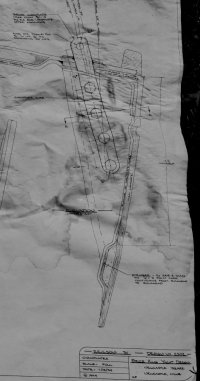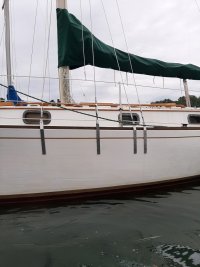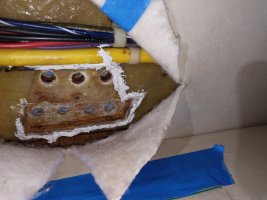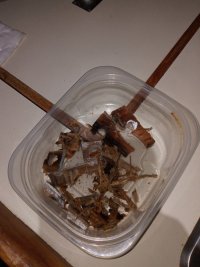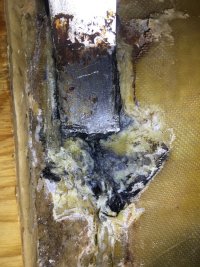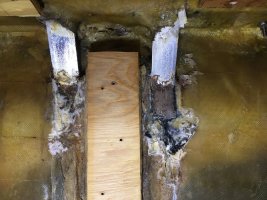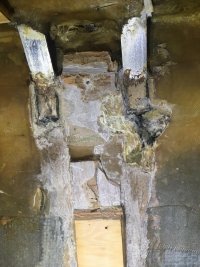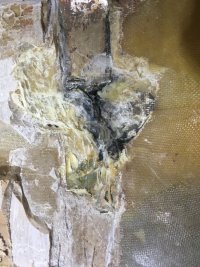Chasing a deck leak on the port side of our E31, now that she is in her new home. I've re-bedded the chainplate covers with butyl tape.
It rained hard a couple of days ago and still a little leak.
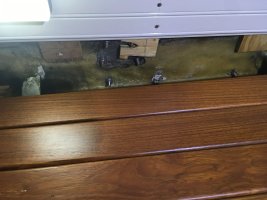
Removed the top piece of ceiling and a couple of pieces of the overhead to get a better look. Found that one of the bolts on that stanchion was leaking. Sealed that. Rained again last night.
This morning I went back, still raining a bit, to check my work.
Stanchion bolts ok. No sign of leakage from the deck chainplate covers - but there was still a puddle of water on the port side shelf above the settee.
Removed more of the ceiling (interesting assembly sequence Ericson used on these, part of the galley had to come out) and found this:
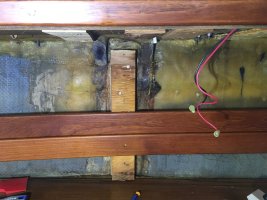
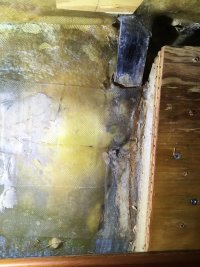
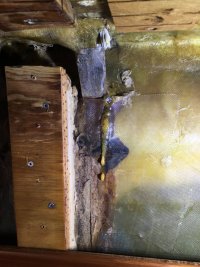
Water is seeping from the dark area on both chain plates, and continued to seep after the rain had stopped and the deck was completely dry. The one in the third photo, is the aft lower, it appears to be the worst of the two. The second photo is the intermediate, which on the E31 cutter takes the place of running backstays. Also, there is what looks to me to be rust stains below the dark area in both photos.
My guess is that water has collected and maybe delaminated a space around each chainplate and/or the foam that was used in the stringer which reinforces the area where the chainplates are mounted, is saturated.
Either way, any thoughts on condition and repair?
Any words of encouragement would be helpful too, as I suspect I'm looking at cutting them both out and replacing. This was not a thing I wanted to find on a Tuesday morning, when I thought we were so close to having her ready to go for a winter sail later this week. Sigh.
It rained hard a couple of days ago and still a little leak.

Removed the top piece of ceiling and a couple of pieces of the overhead to get a better look. Found that one of the bolts on that stanchion was leaking. Sealed that. Rained again last night.
This morning I went back, still raining a bit, to check my work.
Stanchion bolts ok. No sign of leakage from the deck chainplate covers - but there was still a puddle of water on the port side shelf above the settee.
Removed more of the ceiling (interesting assembly sequence Ericson used on these, part of the galley had to come out) and found this:



Water is seeping from the dark area on both chain plates, and continued to seep after the rain had stopped and the deck was completely dry. The one in the third photo, is the aft lower, it appears to be the worst of the two. The second photo is the intermediate, which on the E31 cutter takes the place of running backstays. Also, there is what looks to me to be rust stains below the dark area in both photos.
My guess is that water has collected and maybe delaminated a space around each chainplate and/or the foam that was used in the stringer which reinforces the area where the chainplates are mounted, is saturated.
Either way, any thoughts on condition and repair?
Any words of encouragement would be helpful too, as I suspect I'm looking at cutting them both out and replacing. This was not a thing I wanted to find on a Tuesday morning, when I thought we were so close to having her ready to go for a winter sail later this week. Sigh.
Last edited:

